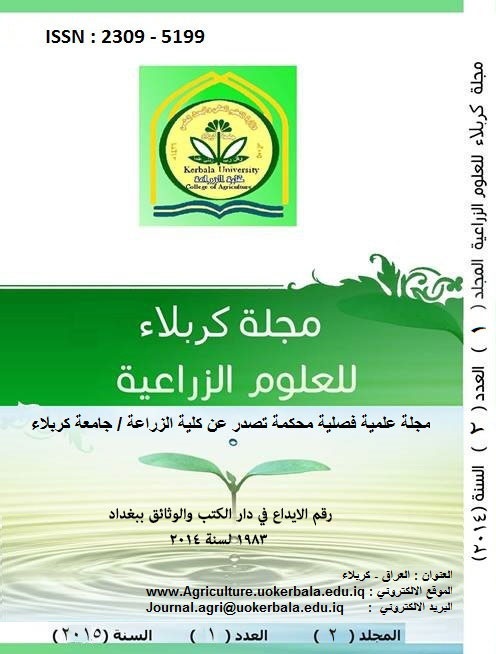Improving rheological properties of weak wheat flour by treating with binary mixtures of some enzymes
DOI:
https://doi.org/10.59658/jkas.v3i1.523Abstract
The present work was conducted as an attempt to improve rheological properties of weak wheat flour by treating with binary mixtures of some enzymes. To determine the optimum concentration of each enzyme, they were individually added to the flour using different concentrations followed by measuring the extensograph parameters. Optimun concentration were 5, 83.3 and 0.133 unit/100gm of flour for glucose oxidase, peroxidase and transglutaminase, respectively. They gave the highest resistance of extension beside their other positive effects on dough rheology. Xylanase optimum concentration was 13.7 unit/100gm flour which gave the highest dough extensibility.
The addition of glucose oxidase with transglutaminase led to decrease exitensibility and increase resistance, ratio, maximum resistance and extensograph area. Treatment with glucose oxidase and peroxidase had a large effect in raising resistance and decreasing the extensibility as compared to all other binary enzymes treatments. The addition of xylanase to transglutaminase - treated flour led to decrease resistance and increase extensibility of the dough. Resistance/extensibility ratio reached 4.6 B.U./mm which is near to the desirable range of this parameter. Also, the addition of this enzyme caused to decrease resistance of peroxidase - treated flour but without affecting extensibility. The ratio was 4.4 B.U./mm. However, the extensograph area had increased upon this treatment as compared to the individual treatment of each of both enzymes.
Downloads
Published
How to Cite
Issue
Section
License
Copyright (c) 2016 Copyright (c) 2024 is the Author's article. Published by the Journal of Kerbala for Agricultural Sciences under a CC BY 4.0 license

This work is licensed under a Creative Commons Attribution 4.0 International License.
Licensing Terms
All articles are published under a Creative Commons License and will be directed to the Creative Commons Attribution 4.0 International License (CC BY 4.0) That permits use, distribution, and reproduction in any medium, provided the original work is properly cited. This license also allows the work to be used for commercial purposes.
Use by both non-commercial and commercial users
This content is licensed under a Creative Commons Attribution 4.0 International (CC BY 4.0) license, permitting use by both non-commercial and commercial users. Individual users may access, download, copy, display, and redistribute the articles to colleagues, as well as adapt, translate, and text- and data-mine the content, subject to the following conditions:
- The author's moral rights, including the right of attribution and the right to protect their work from derogatory treatment, are respected.
- Where content in the article is identified as belonging to a third party, users must ensure that any reuse complies with the copyright policies of the owner of that content.
- If the article content is reused for research or educational purposes, users should maintain a link to the appropriate bibliographic citation, including the DOI and a link to the published version on the journal's website.

